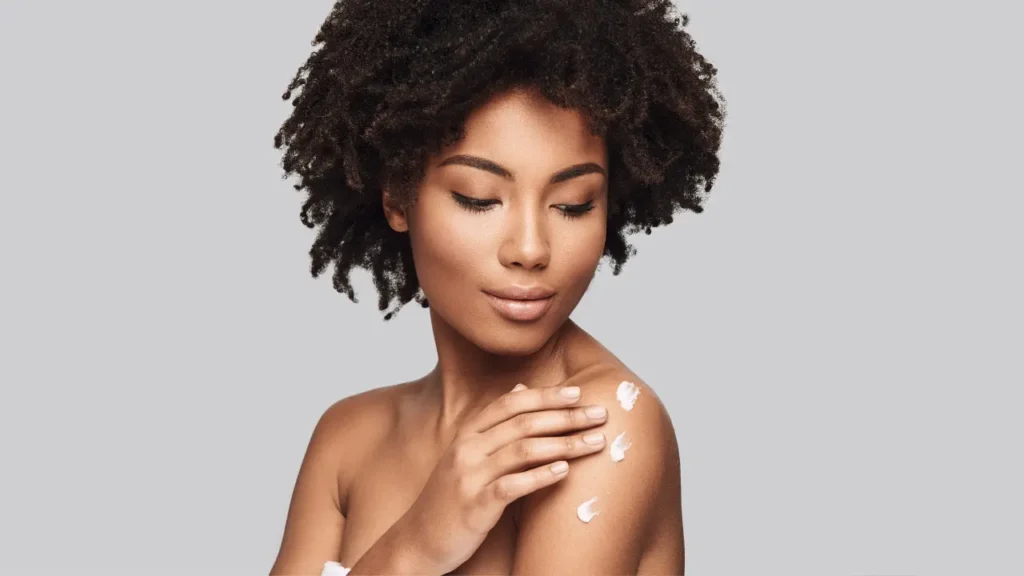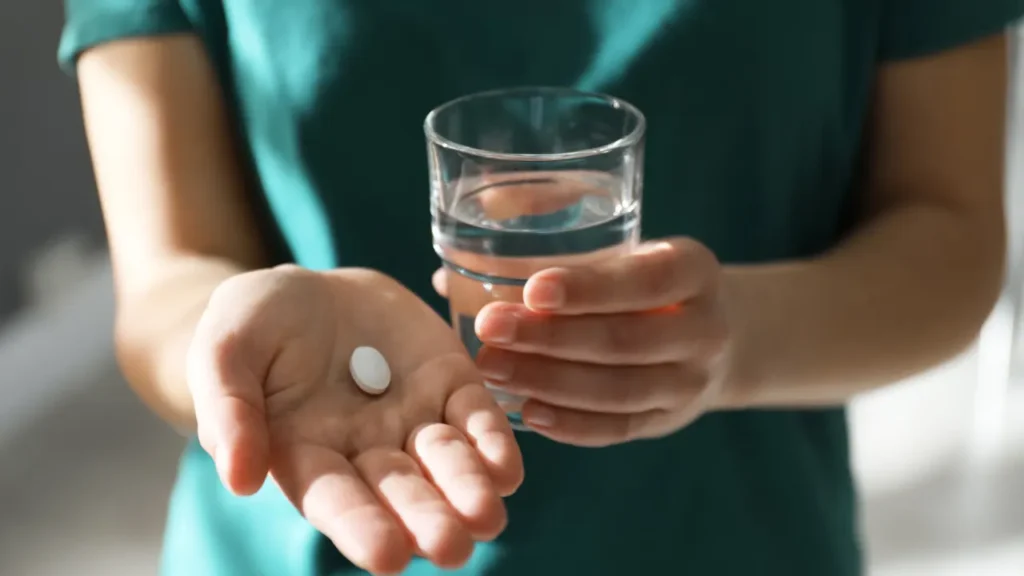Description
Birthmarks are abnormal skin growths that appear at or soon after birth. The birthmarks are identified by variations in the skin’s color or texture. They might resemble raised or flat patches of skin, and their hues can range from red, purple, or pink to black or brown. Birthmarks may already exist at birth or might show up soon after. They may appear anywhere on the human body, including the genitalia, face, arms, trunk, and legs.
Types of Birthmarks
Birthmarks can be categorized into two principal groups: vascular and pigmented.
Vascular birthmarks: Vascular birthmarks are brought on by aberrant skin blood vessels. They are often pink, red, or purple that appear flat or elevated. The most typical varieties of vascular birthmarks consist of: –
- Strawberry hemangiomas
An excess of blood vessels that causes raised, purple, or red patches of skin. They can be anything from tiny, pinpoint dots to sizable, elevated skin regions. Hemangiomas can appear anywhere on the human body, but the regions of the face, the neck, and the trunk are where they are most frequently detected.
- Salmon patches
Salmon patches are birthmarks that are flat and pink and they may show up on the forehead, eyes, or neck. Generally, within some months, they disappear on all of their own.
- Port-wine stains
Port-wine stains are birthmarks where a high concentration of blood vessels appears on the skin which appear to be flat and purple, or red in color. Even though port-wine stains may appear anyplace on the human body, they are most frequently seen on the facial area.
Pigmented birthmarks: On the other hand, pigmented birthmarks are brought on by an overabundance of pigment-producing skin cells. They are normally dark or black and may appear flat or elevated. The most typical kinds of birthmarks with pigmentation comprise of: –
- Café-au-lait spots
Spots that tend to be flat and light brown and typically oval in shape. Actually, they can appear anywhere on the human body, and as individuals become older, they might get bigger and more widespread.
- Congenital melanocytic nevi
Raised moles that are dark brown, or black appearing from birth. Such moles can appear anywhere, and as people become older, they might get bigger in size and more frequent.
- Mongolian spots
These are typically blue or gray patches that develop on the lower back or buttocks. People with darker skin tones are more inclined to develop them.
You May Also Like:
DON’T LET AGGRAVATION KILL YOU: 7 BEST WAYS TO REDUCE STRESS NOW
OLLY GOODBYE STRESS GUMMIES REVIEWED: A LEADING STRESS RELIEF PRODUCT
Birthmarks: Description, Causes, and Treatment Protocol is an original (HealthXWire) article.
Possible Causes
Although the exact reason for birthmarks is unknown, it is believed that the interaction of environmental and genetic factors is responsible. Some birthmarks, including hemangiomas and port-wine stains, can be brought on by a mutation in the genes that interfere with blood vessel development. The other type is due to an excess of melanin on a person’s skin.
Exacerbating and Mitigating Factors
Birthmarks can be exacerbated or made to appear worse by some factors while being lessened by others. Exposure to direct sunlight and hormone fluctuations can make pigmented birthmarks darker or trigger the hemangiomas to expand. Maintaining clean, moisturized skin and refraining from touching or itching the birthmark can help to mitigate the appearance of birthmarks. If desired, you can also hide the birthmarks with cosmetics or clothing.

Standard Treatment Protocol(s)
The type, location, and intensity of the birthmark all influence the recommended course of treatment. Most birthmarks can usually be left alone; they will eventually fade or disappear without treatment. The majority of birthmarks don’t need to be treated, however, some can be physically or emotionally uncomfortable and might be helped with treatments. The standard birthmark treatment regimens consist of: –
Laser therapy: High-energy light is utilized in laser therapy. Laser therapy is a non-invasive procedure to harm the skin’s pigment or blood vessels. Vascular birthmarks like some hemangiomas and port-wine stains respond best to laser therapy. Additionally, it can also be applied to lessen or get rid of pigmented birthmarks like congenital melanocytic nevi and cafe-au-lait spots. The size and position of the birthmark will determine how many laser treatments are necessary.
Surgery: For big or deep hemangiomas which are inflicting severe pain physically or emotionally, surgery may be advised. The birthmark may be entirely removed via surgery or its dimensions and depth may be significantly decreased. Surgery is typically saved for situations where other medical treatments have failed since it carries some possibilities of scarring along with other consequences.
Corticosteroid injections: Certain birthmarks, like hemangiomas, can be treated with corticosteroid injections. Injections of corticosteroids have the effect of decreasing blood vessel development and inflammation in birthmarks.
Topical medications: Particular kinds of hemangiomas may be treated with topical drugs like imiquimod. These drugs work by encouraging the body’s immune system to attack the aberrant blood arteries. They could be combined with other forms of therapy, like laser therapy.
Oral medications: Some varieties of hemangiomas might be treated with oral medications, that include beta-blockers. Beta-blockers cause the birthmark to contract by decreasing the amount of blood circulation to it. Oral drugs might be combined with laser therapy.

Treatment Options
There are complementary and alternative treatments that can be used in addition to regular treatment regimens that may increase the effectiveness of traditional therapies. Prescription drugs, over-the-counter medicines, and dietary supplements including natural therapies and herbal treatments are some of the alternatives available.
Prescription Medications: For some forms of birthmarks, especially those that are generating emotional or physical distress, prescription drugs could be advised. Vascular birthmarks might be treated with corticosteroids like prednisone or dexamethasone, which can help to lessen the birthmark’s size and redness. Pigmented birthmarks are also treated with topical drugs that lighten the skin like hydroquinone.
Over-the-Counter Formulations: Birthmarks can also be treated with over-the-counter medications, like topical creams and gels. Ingredients like vitamin C, glycolic acid, or retinol, can aid in enhancing skin texture and lessen the visible signs of pigmentation. It is crucial to remember that over-the-counter remedies could not be as efficient as prescription drugs or other treatment alternatives.
Natural and Herbal Remedies: Birthmarks are said to respond well to a variety of herbal and natural treatments. The following are some examples of herbal and natural treatments: –
- Tea tree oil
Natural essential oil referred to as tea tree oil contains anti-inflammatory and antibacterial effects. According to a 2014 study by the Journal of Cosmetic Dermatology, administering a ten percent tea tree oil ointment twice daily for a period of six months to cafe-au-lait patches significantly lightened the birthmarks.
- Aloe vera
Aloe vera, which is well known for its calming and hydrating qualities, is an all-natural treatment. Aloe vera gel might be administered topically on damaged skin to aid in healing and reducing inflammation.
- Turmeric
Certain kinds of birthmarks may respond well to the natural anti-inflammatory properties of turmeric.
- Chamomile tea
To lessen the itching and inflammation brought on by certain kinds of birthmarks, chamomile tea might be used topically.
- Grape Seed Extract
The natural antioxidant grape seed extract is frequently found in nutritional supplements. It is said that the antioxidant properties of grape seed extract reduced the visible signs of pigmented birthmarks.
Nutritional Supplements: The following are nutritional supplements that can increase the efficacy of standard treatment protocols: –
- Vitamin C
Birthmark treatment may benefit from vitamin C’s ability to enhance skin healing and decrease inflammation.
- Vitamin E
Skincare products containing vitamin E might be beneficial for some birthmark types. A 2005 study indicated that using a topical vitamin E ointment on hemangiomas significantly improved the birthmark’s appearance.

Conclusion
Birthmarks are abnormal skin growths that can range in size, color, or texture. Vascular birthmarks as its name suggests are caused by aberrant skin blood vessels while pigmented birthmarks are due to an abundance of pigment-producing skin cells. While most birthmarks are generally harmless and do not require treatment, interventions may be sought for cosmetic or medical reasons such as laser therapy, surgical excision, corticosteroid injections, or some topical medications. There are also nutritional supplements that can be used to improve the appearance of birthmarks. Regardless of their nature, embracing one’s birthmarks is a powerful aspect of self-acceptance. Birthmarks often carry unique stories, making each one a distinctive part of an individual’s identity.

Additional resources for further reference
https://www.aad.org/public/diseases/a-z/birthmarks-symptoms
https://www.healthline.com/health/birthmark#causes
https://www.nhs.uk/conditions/birthmarks/
Important Note: The information contained in this article is for general informational purposes only, and should not be construed as health or medical advice, nor is it intended to diagnose, prevent, treat, or cure any disease or health condition. Before embarking on any diet, fitness regimen, or program of nutritional supplementation, it is advisable to consult your healthcare professional in order to determine its safety and probable efficacy in terms of your individual state of health.
Regarding Nutritional Supplements Or Other Non-Prescription Health Products: If any nutritional supplements or other non-prescription health products are mentioned in the foregoing article, any claims or statements made about them have not been evaluated by the U.S. Food and Drug Administration, and such nutritional supplements or other health products are not intended to diagnose, treat, cure, or prevent any disease.
Table of Contents


